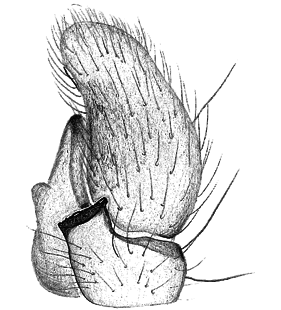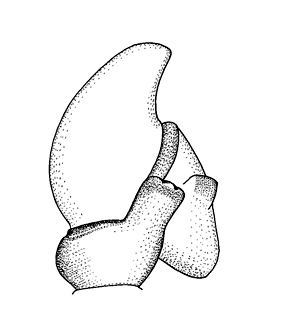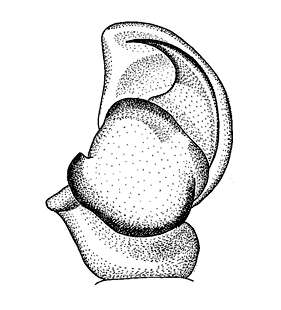Pseudicius badius (Simon, 1868)
Description
Male
Prosoma and opisthosoma as in P. encarpatus. Inner side of femur I apically with 1+5 spines. Tibial apophysis broad and blunt, not reaching the lateral tegular process.
Body length male: 4.5-4.8 mmFemale
Prosoma dorsally as in male but with dense light grey hairs. Opisthosoma as in male, dorsally lighter.
Body length female: 5-6.9 mmDistribution
Figures
Distribution List
"No references" does not mean that the species does not occur in this country, but that we have not yet inserted the reference for it. We are working on it.
References
Blagoev G, Deltshev C, Lazarov S, Naumova M (2018) The spiders (Araneae) of Bulgaria. Version: August 2018. National Museum of Natural History, Bulgarian Academy of Sciences. Online at http://www.nmnhs.com/spiders-bulgaria/ (accessed on 10.9.2018) ![]()
Le Peru B (2007) Catalogue et répartition des araignées de France. Revue Arachnologique 16: 1-468 ![]()
Metzner H (1999) Die Springspinnen (Araneae, Salticidae) Griechenlands. Andrias 14: 1-279 ![]()
Miñano J, Tamajón Gómez R (2017) Descripción de una nueva especie de Afraflacilla Berland & Millot, 1941 (Araneae: Salticidae) del área del Mediterráneo occidental. Revista Ibérica de Aracnología 31: 71-81 ![]()
Pantini P, Isaia M (2019) Araneae.it: the online catalog of Italian spiders, with addenda on other arachnid orders occurring in Italy (Arachnida: Araneae, Opiliones, Palpigradi, Pseudoscorpionida, Scorpiones, Solifugae). Fragmenta Entomologica 51: 127-152 ![]()
Prószyński J (2003) Salticidae (Araneae) of the Levant. Annales Zoologici, Warszawa 53: 1-180 ![]()
WSC (2025) World Spider Catalog. Version 26. Natural History Museum Bern, online at http://wsc.nmbe.ch (28.2.2025) doi: 10.24436/2 ![]()





